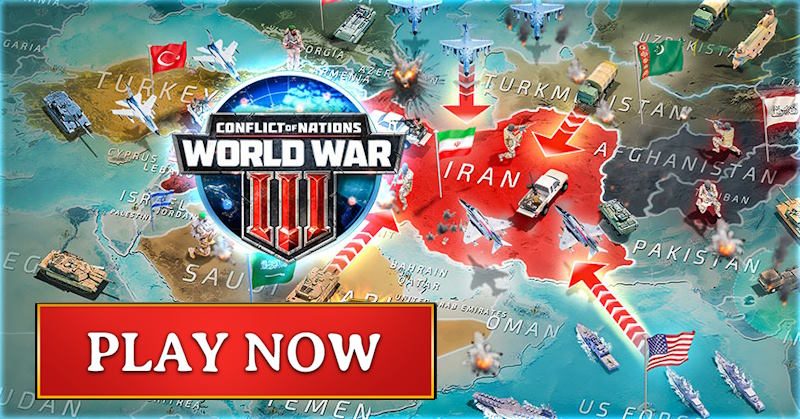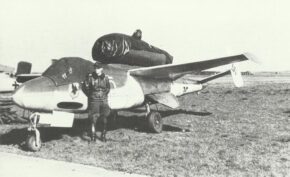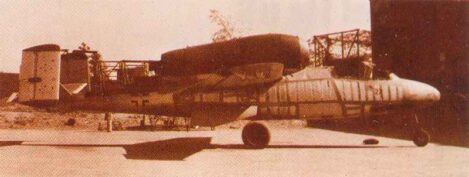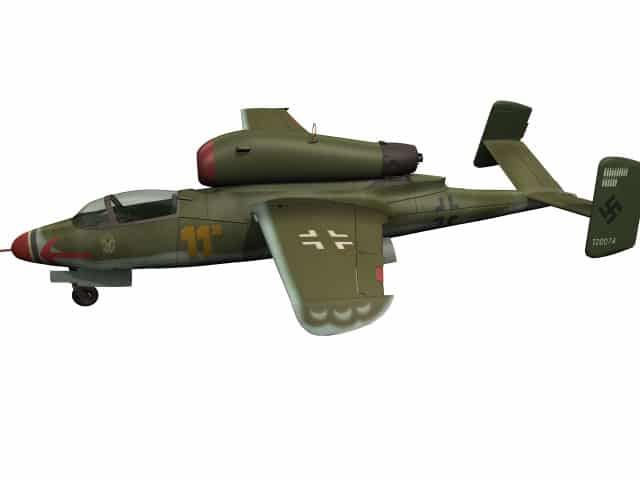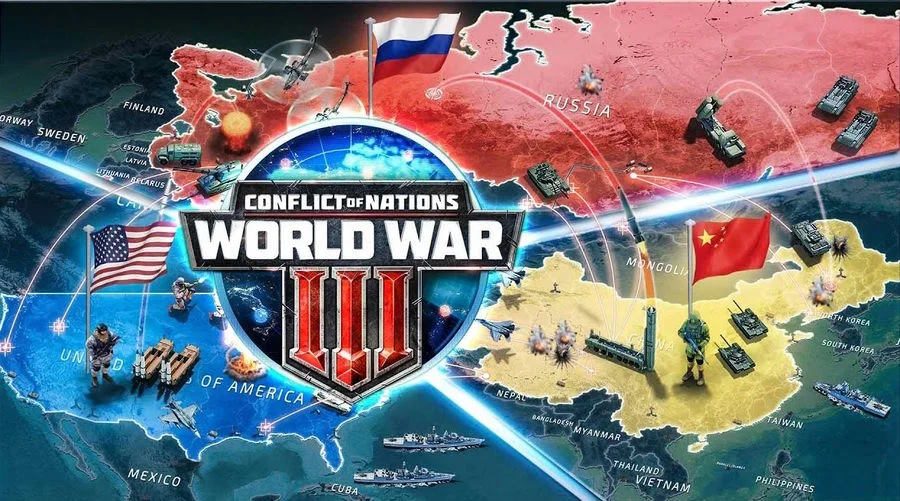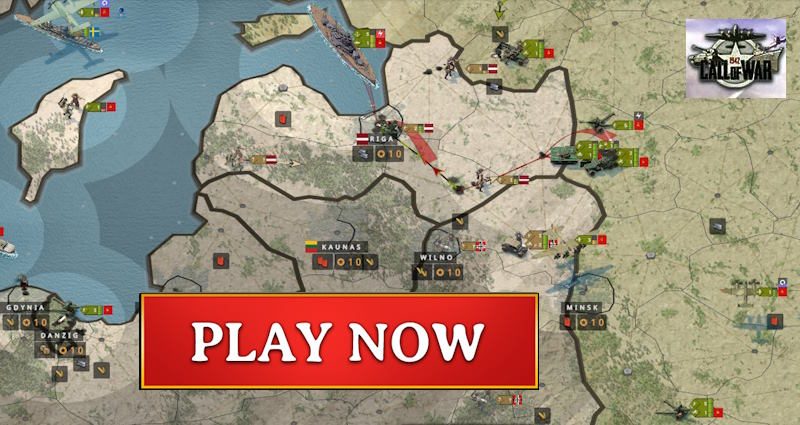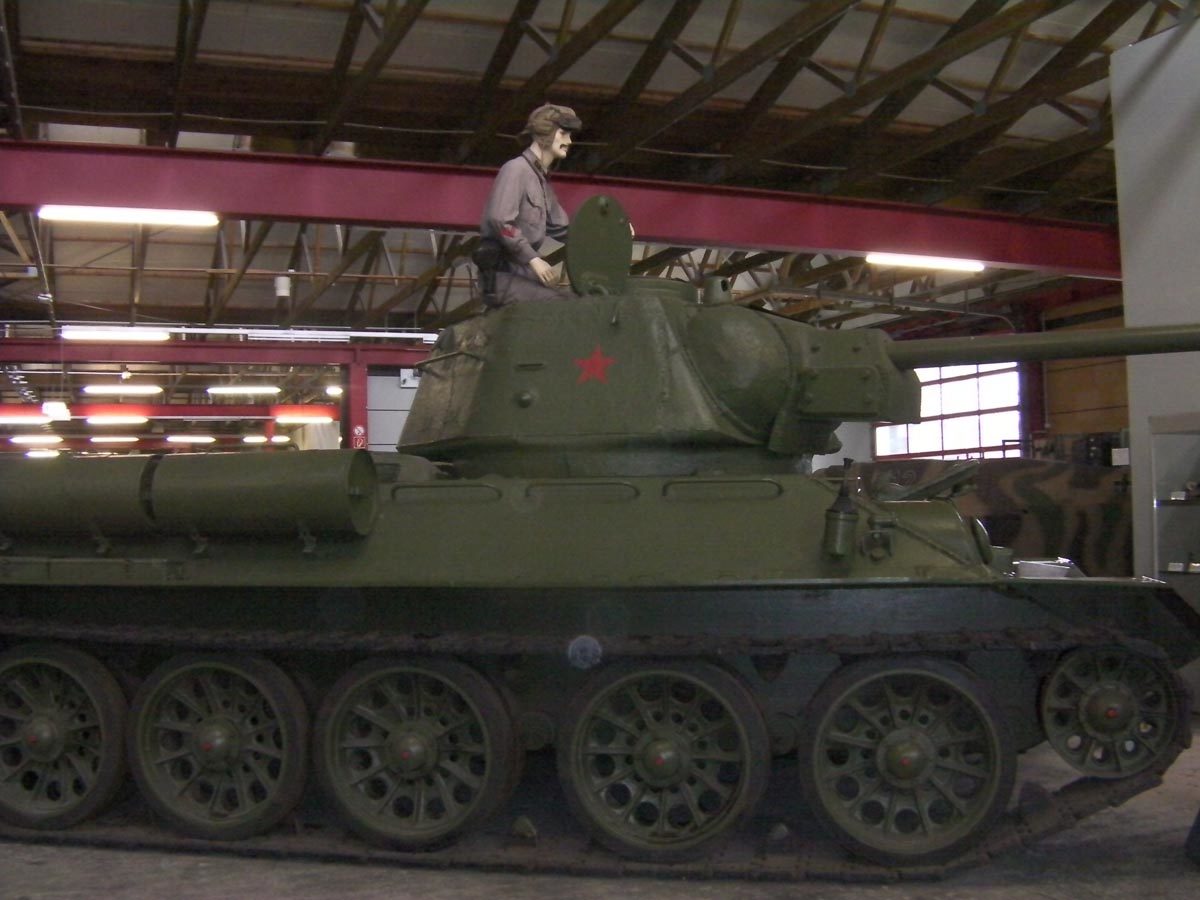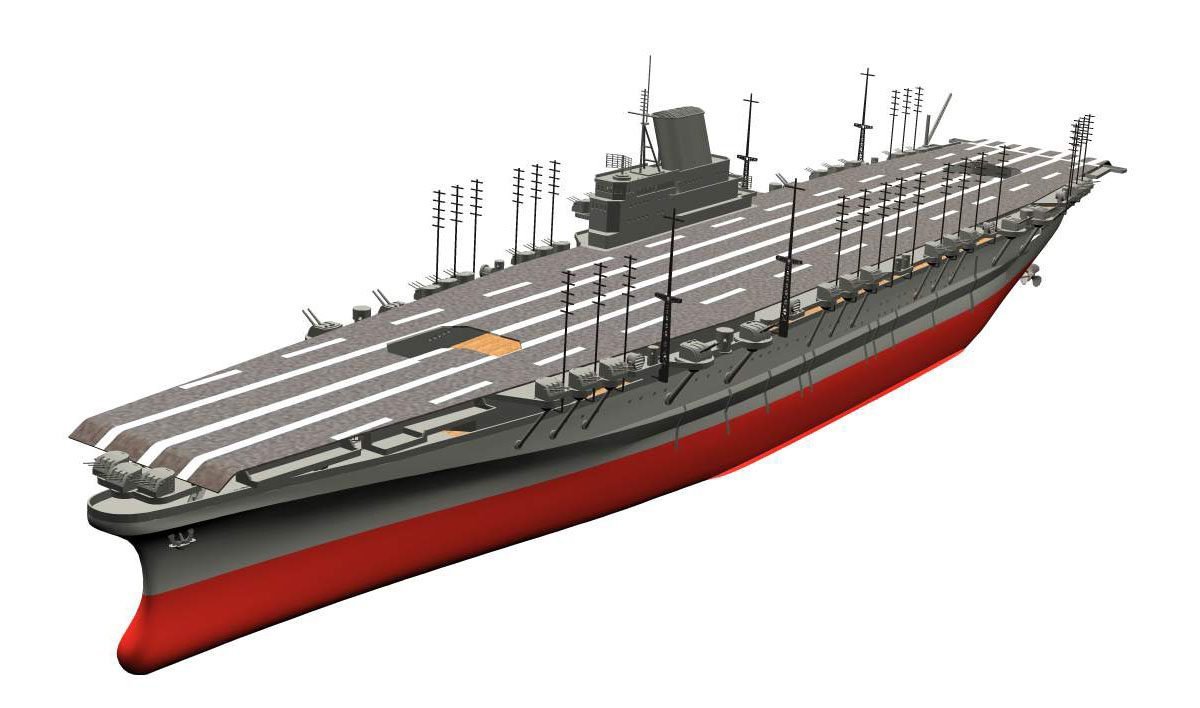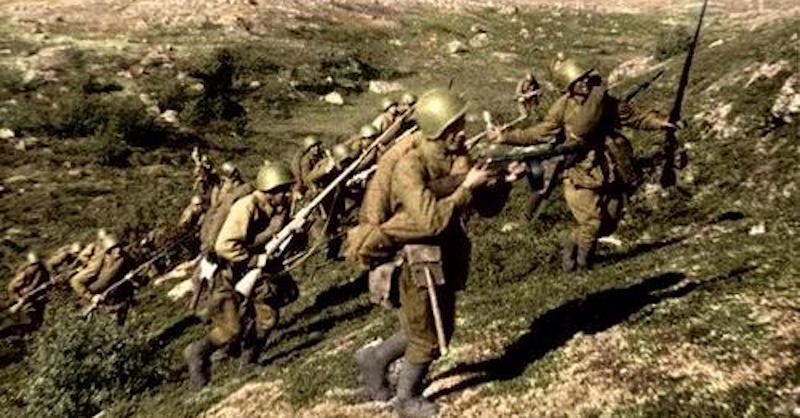Jet fighter and interceptor Heinkel He 162 Salamander or ‘People’s fighter’.
History, development, service, specifications, statistics, pictures and 3D model.
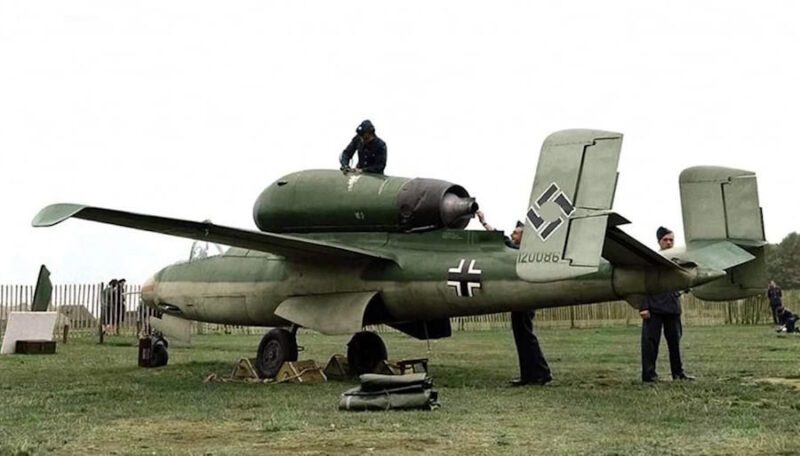
Heinkel He 162
Table of Contents
Heinkel He 162 Salamander (Volksjäger).
Type: German Luftwaffe jet fighter and interceptor.
The Heinkel He 162 was a German single-engine, jet-powered fighter aircraft developed during the final stages of World War II.
Overview
Nickname: It was nicknamed “Volksjäger” (People’s Fighter) or “Salamander.”
Design: The He 162 was designed to be a simple, fast, and cheap-to-produce fighter jet.
Development: It was developed in response to the “Emergency Fighter Program” initiated by the German Air Ministry in 1944.
Construction: To conserve strategic materials, it was largely made of wood.
Engine: It was powered by a single BMW 003 axial-flow turbojet engine mounted on top of the fuselage.
Performance: The He 162 could reach speeds of up to 562 mph (905 km/h), making it one of the fastest aircraft of World War II.
Armament: It was typically armed with two 20 mm MG 151/20 cannon.
Production: Despite the late stage of the war, over 300 units were produced.
Service: Only a small number of He 162s saw combat before the war ended.
Post-war: Several captured examples were evaluated by Allied forces after the war.
Challenges: The aircraft suffered from reliability issues and was difficult for inexperienced pilots to fly.
The He 162 represents one of the last desperate attempts by Nazi Germany to field advanced weapons in the closing months of World War II. While innovative, it came too late to have any significant impact on the outcome of the war.
History
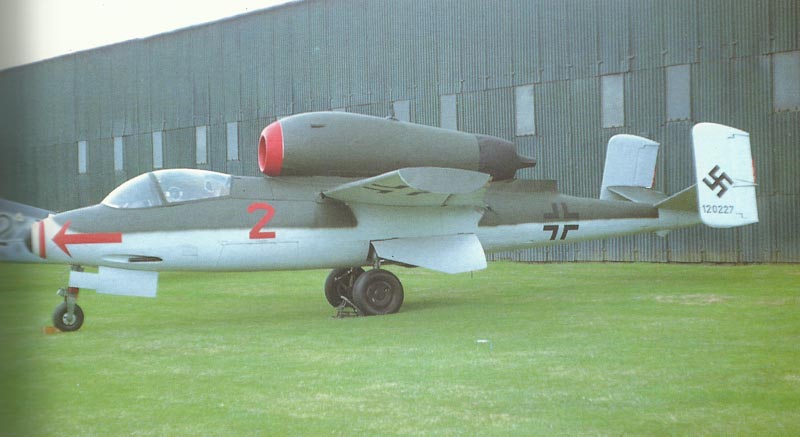
One of the most rapidly conceived warplanes ever produced, the He 162 home defense fighter existed as a wooden mock-up within 15 days of the issue, on 8 September 1944, of the RLM requirement. Seven days later a huge production contract was placed; detail design drawings were completed by the end of October; and on 6 December 1944 – less than 13 weeks from initiation of the program – the He 162 V1 (or A-01) made its first flight. Dubbed, for propaganda purposes, the Volksjaeger (People’s Fighter), the He 162 was of attractive if unorthodox appearance and was built largely of wood and other non-strategic materials.
Its looks, however, belied a dangerous instability and some vicious handling characteristics, and troubles were also encountered (as in the Focke-Wulf Ta154) with the wood-bonding adhesive used. Under the high priority given to fighter programs in 1944-45, manufacture of the He 162, under the code name Salamander, was assigned to numerous factories. It was planned to produce 2,000 a month by May 1945 and 4,000 a month ultimately, and about 800 were in various stages of assembly when the war in Europe ended. A further 280 or so He 162 A-0s, A-1s and A-2s had actually been completed. These differed primarily in their armament, the A-1 having two 30 mm MK 108 cannon in the lower forward fuselage and the A-2 a pair of 20 mm MG151s.
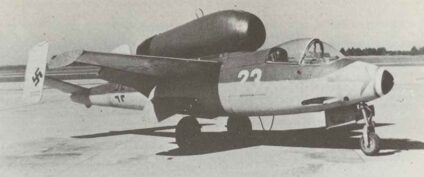
The first Luftwaffe unit to fly the He 162A was Erprobungskommando 162, which began to receive these aircraft in January 1945; but the first operational units, I. and II./JG I, were still working up at the beginning of May. Consequently, very few He l62s were actually encountered in combat. I./JG I was operational at Leck, though nearly without fuel. But it managed to shot down two Allied planes at the end of April, one of them a Hawker Tempest.
Proposed later versions included He 162A sub-types up to A-14, the He 162B (one or two pulse-jet engines), the He 162C (swept-forward wings), the He 162D (sweptback wings), and models with combined jet and rocket propulsion.
Users: Germany (Luftwaffe).
Animated 3D model of Heinkel He 162 Salamander
Specifications for Heinkel He 162 A-2 Salamander (Volksjaeger)
Specifications:
Type | jet fighter, interceptor |
|---|---|
Power plant | one 1,764 lb thrust BMW 003E-1 or E-2 Orkan single-shaft turbojet |
Accommodation | 1 |
Wing span | 23 ft 7.5 in |
Length overall | 29 ft 8.3 in |
Height overall | 8 ft 6.4 in |
Wing area | 120.13 sq/ft |
Weight empty | 3,876 lb |
Weight loaded | 6,184 lb |
Max. wing loading | 51.48 lb/sq ft |
Max. power loading | 3.51 lb/lb st |
Maximum speed | 562 mph at 19,685 ft (490 mph at sea level) |
Initial climb | 4,613 ft/min |
Service ceiling | 39,500 ft |
Range | 434 miles (at full throttle) |
Armament:
Heinkel He 162 A-2 Salamander (Volksjaeger) | Specification |
|---|---|
forward | 2 x 20mm Mauser MG151/20 (720 rpm, velocity 1,920 ft/sec) with 120 rounds each |
early He 162A-1 versions | 2 x 30mm MK108 (650 rpm, velocity 1,705 ft/sec) cannon with 50 rounds each |
Service statistics:
Heinkel He 162 Salamander (Volksjaeger) | figures |
|---|---|
First flight | 6 December 1944 |
First delivery | January 1945 |
Final delivery | May 1945 |
Total production figure (all) | Total: 300 (+800 in factories, 2,000 a month by May, 4,000 a month from June 1945) |
References and literature
Combat Aircraft of World War II (Bill Gunston)
Technik und Einsatz der Kampfflugzeuge vom 1. Weltkrieg bis heute (Ian Parsons)
Das große Buch der Luftkämpfe (Ian Parsons)
Luftkrieg (Piekalkiewicz)
Flugzeuge des 2. Weltkrieges (Andrew Kershaw)
German Aircraft of World War 2 in Colour (Kenneth Munson)
Warplanes of the Luftwaffe (David Donald)
The Luftwaffe Album, Bomber and Fighter Aircraft of the German Air Force 1933-1945 (Joachim Dressel, Manfred Griehl)
Luftwaffe Handbook (Dr Alfred Price)
Luftwaffe Jet Fighters and Rocket Interceptors 1944-1945 (J. Richard Smith & Eddie J. Creek)


